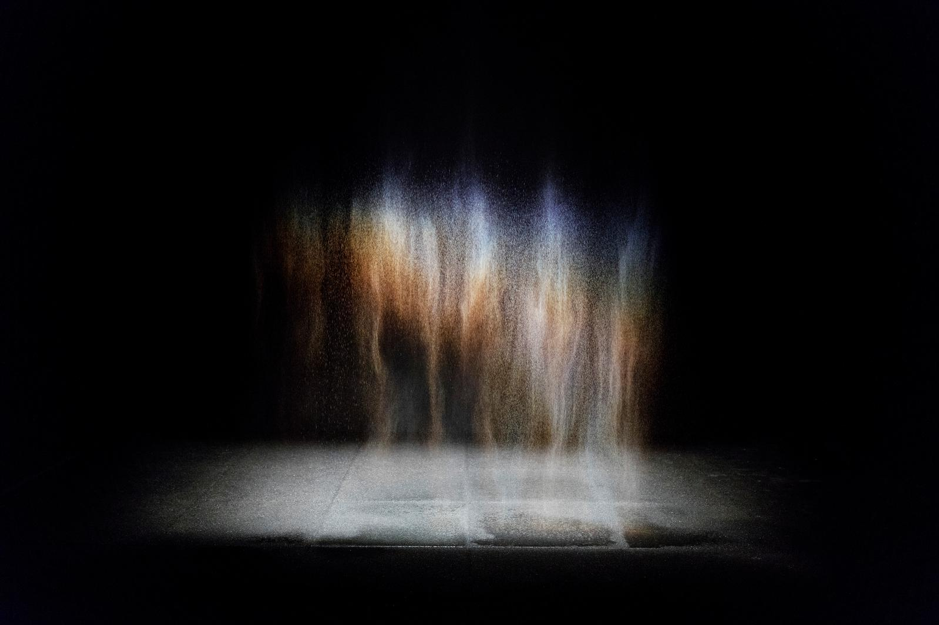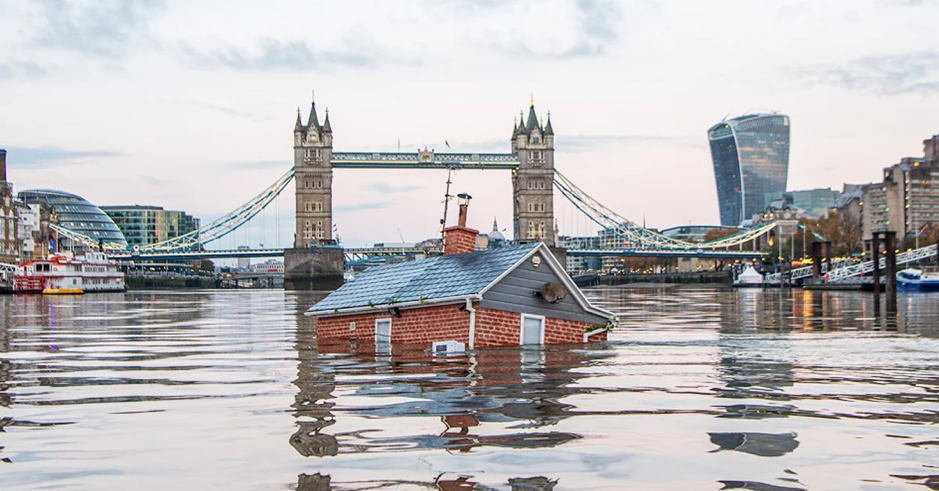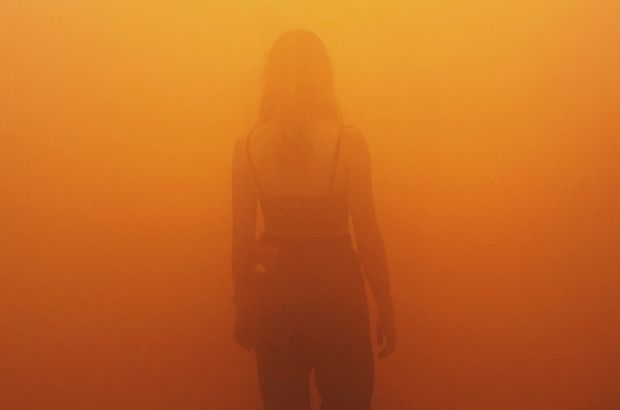ASIA CHOUDHRY reviews Olafur Eliasson’s In Real Life at the Tate Modern.
Scrolling through Instagram one day during summer, I stumbled upon pictures of my friends standing in a dreamy, orange fog. It was both eerie and aesthetically pleasing, and I immediately had to know more. After briefly searching online, Olafur Eliasson’s name appeared on the first try, alongside words such as ‘mind-bending’ and ‘glorious’. I began to grow excited as I read more about him: a Danish-Icelandic artist, famous for his sculptures and large-scale installation art, who often employs elemental materials in his work. The exhibition itself, named In Real Life at the Tate Modern, is stated to explore his ‘deep engagement with society and the environment’, and the viewer is encouraged to ‘discover what an artist’s perspective can bring to issues of climate change’.
On that particular summer’s day, I was undergoing a familiar bout of climate anxiety, a feeling which affects many of us alive today. The climate emergency exercises a great deal of power when it comes to mental health, and the exhibition seemed an antidote to my fears; it was a way to completely immerse myself in art that deals with the crisis, to educate myself, to feel a connection with others around me. Several of his pieces particularly interested me: Your Blind Passenger (the eerie fog), his Icelandic glacier photographs, and his Glacial Works, all of which deal with the environment and climate change. Concern with nature is not the only theme in this exhibition, but several pieces are centred on it. I went in the hope of finding that the artwork successfully informed and impacted ‘the world outside the museum’. I wanted the importance of the climate crisis to be impressed upon me, I wanted to feel and experience the artist’s concern for nature and match it to my own. Ultimately, I was disappointed.

I do not deny that the exhibition was astonishing; the work was beautiful and otherworldly, with pieces such as Beauty introducing me to a type of art which I have never experienced before. I also ascribe a great deal of aesthetic value to many of his pieces; Big Bang Fountain, for example, mesmerised me. However, the ‘otherworldly’ nature of his works becomes problematic in the context of climate activism. The artwork was so abstract that one of Eliasson’s main inspirations, concern with nature, was lost. I felt as though I had been propelled headfirst into a waking dream, with the artist’s aim of ‘heightening the senses’ backfiring; I walked around as if in a daze. I was taken out of the real world and placed into another, one in which nothing seemed urgent and nothing seemed real.
The three pieces I mentioned above, the ones I was most interested to view, were the most underwhelming in terms of ‘concern with nature’. Your Blind Passenger invites the viewer to consider an urban atmosphere in a dystopian future; one in which we have failed to reduce air pollution from coal and biomass burning. It was panic-inducing and surprising at first, but the duration of the exhibit caused me to relax into it; people all around me were posing for photos, which exemplifies the exhibition’s status as more of a photo opportunity than an alarming commentary on air pollution. His Icelandic glacier photographs were revealed to have been from 1999, which hardly made any impact on me. Yes, the ice sheets were melting in 1999, but would it not be more striking to have a comparison from 1999 to the current time in order to suitably outline the extraordinary crisis we are currently in? I discovered afterwards that more recent photographs were to be added in autumn, but I found this more discomforting than anything; think of the thousands of people who had already attended the exhibition (which ended soon after, in January) and would never see those new photographs. The other pieces in his Glacial Works encapsulate the exhibition’s abstract nature. One of them, Glacial Currents, was essentially made by placing chunks of glacial ice on top of washes of coloured pigment, and as this melted, swells and fades of colour were created. On the Tate Modern website, it states that ‘Eliasson often uses glacial ice in his work… the ice is intended as a call for action against the climate emergency.’ However, this did not feel apparent when viewing Glacial Currents; its relevance to the climate emergency felt merely tangential through the incorporation of melted glacier ice.

When I left the exhibition, I also left the dreamscape. I was vaguely aware of having enjoyed it, but I was also confused as to the message that Eliasson was trying to illustrate. On the one hand, direct references were made to ‘climate change’ and ‘climate emergency’ in the writing around the exhibition, but this was not reflected in the art itself. It was simply too abstract to provide a serious commentary on climate change, too dreamlike to make the reality of our situation seen and understood. The role of this art in alerting us to the climate crisis seems to be becoming obsolete in the face of groups such as Extinction Rebellion, a group whose strikes and protests call for immediate, real change. Whilst it is true that art and protesting are two separate mediums with two separate roles to play, Extinction Rebellion have been creating artworks to enrich their message. In Austria, six rebels carried a giant metal disk into the centre of a blockade and anchored it to the road; on one side of the disk, a barren Earth, and on the other, the XR symbol. On the tenth of November, the group staged action on the river Thames itself; a recreation of a classic suburban house could be seen floating down the river, sinking lower and lower. With these examples in mind, it becomes difficult for me to see how Eliasson’s abstract work can impact the world outside the museum. If Eliasson’s artwork wishes to make a commentary on climate change and thus elicit some form of impact, then abstract, quixotic pieces are not the way forward. Perhaps artists such as himself ought to be looking more to Extinction Rebellion’s work, which illustrates how art can sit side by side with a clear, important message. Now more than ever we need art that encourages urgent action, and, Eliasson’s exhibition unfortunately fell short.

Olafur Eliasson’s exhibition In Real Life ran at the Tate Modern from 11 July 2019 – 5 January 2020.
Featured image: Olafur Eliasson, Your Blind Passenger, 2010, courtesy of medium.com.





